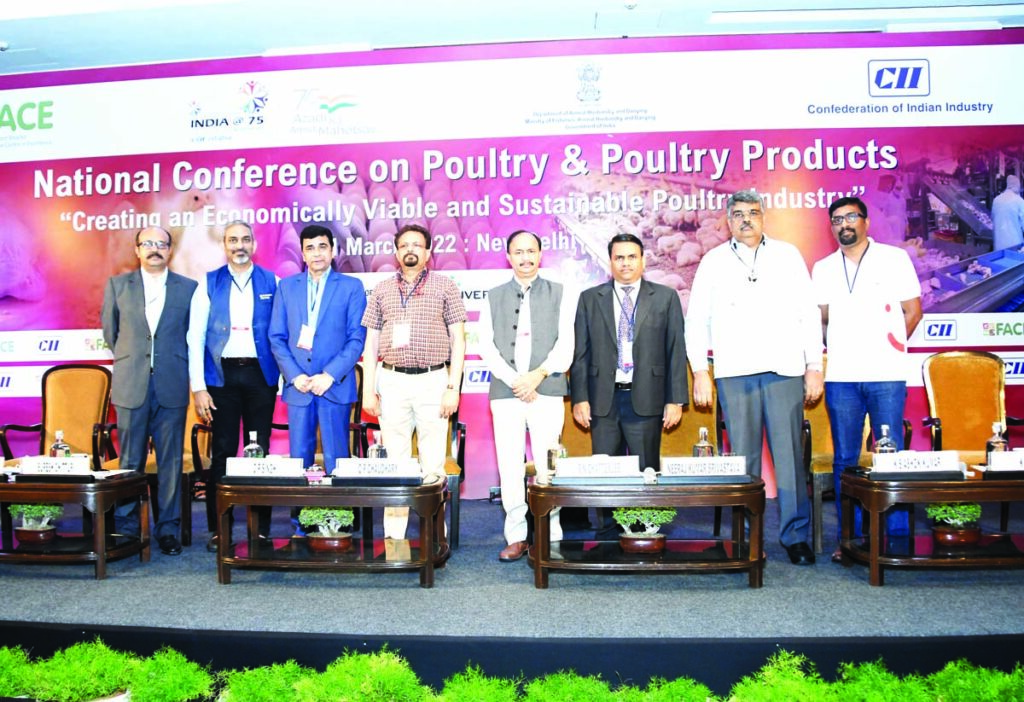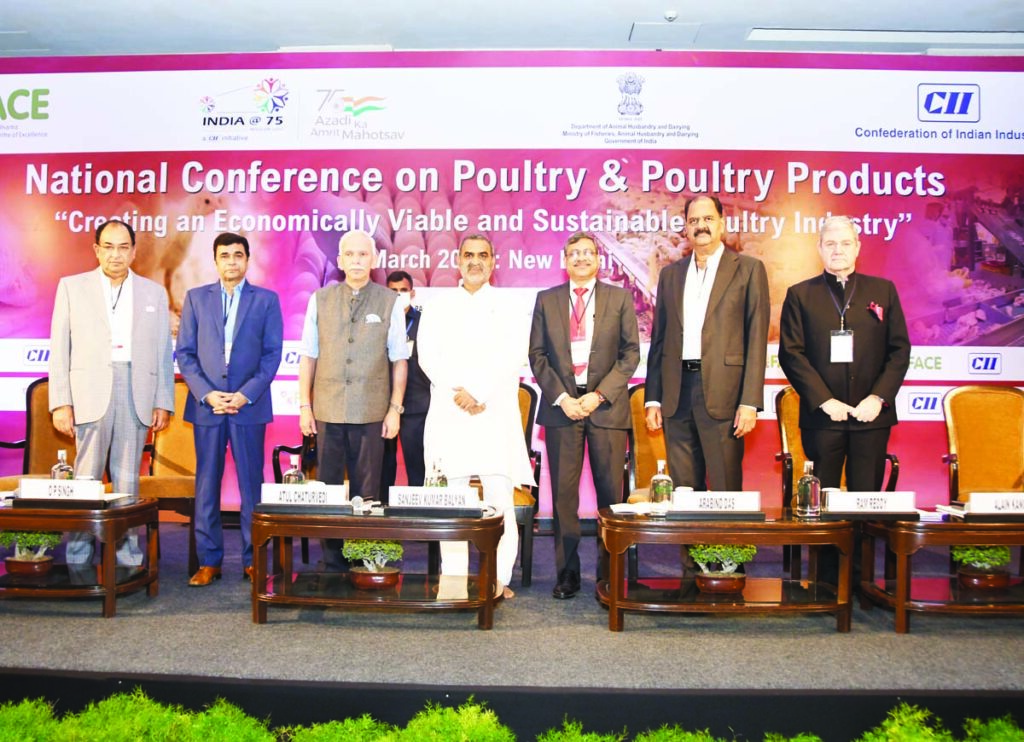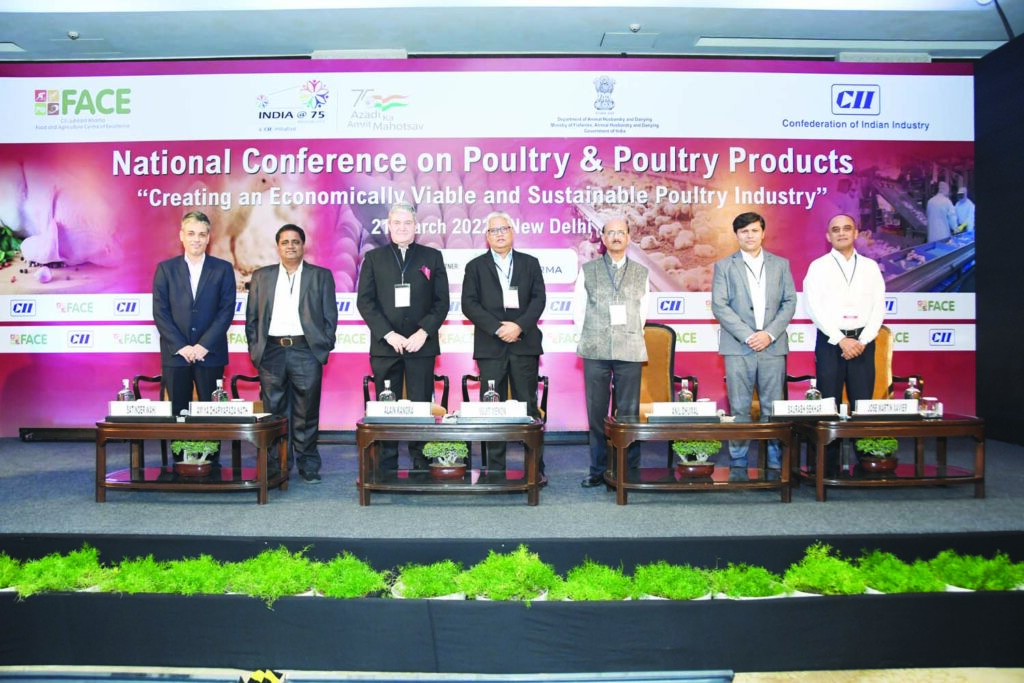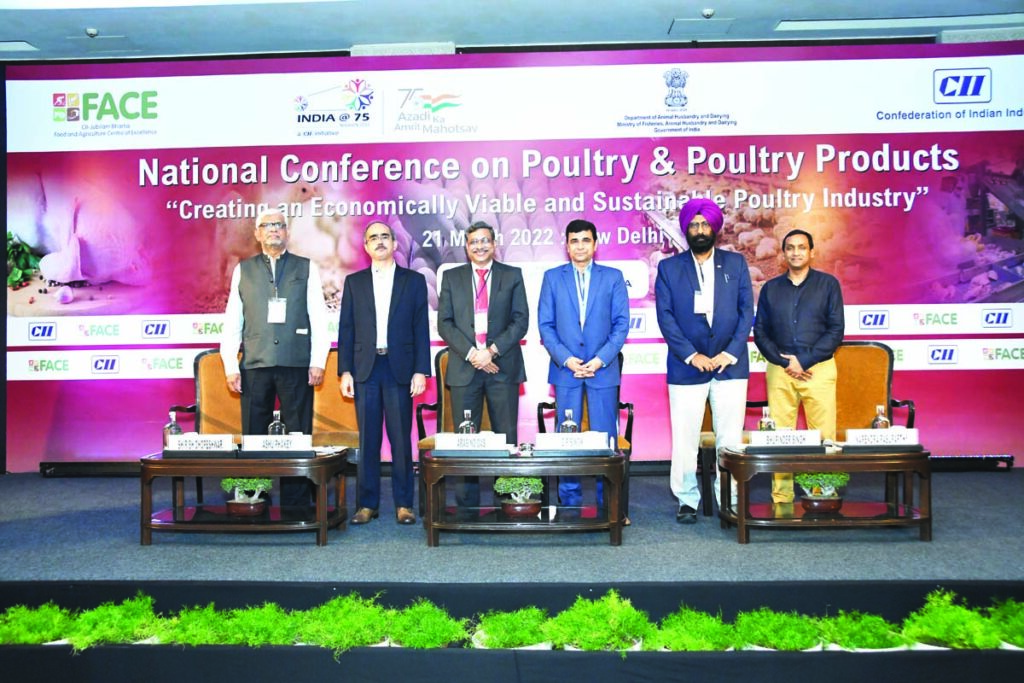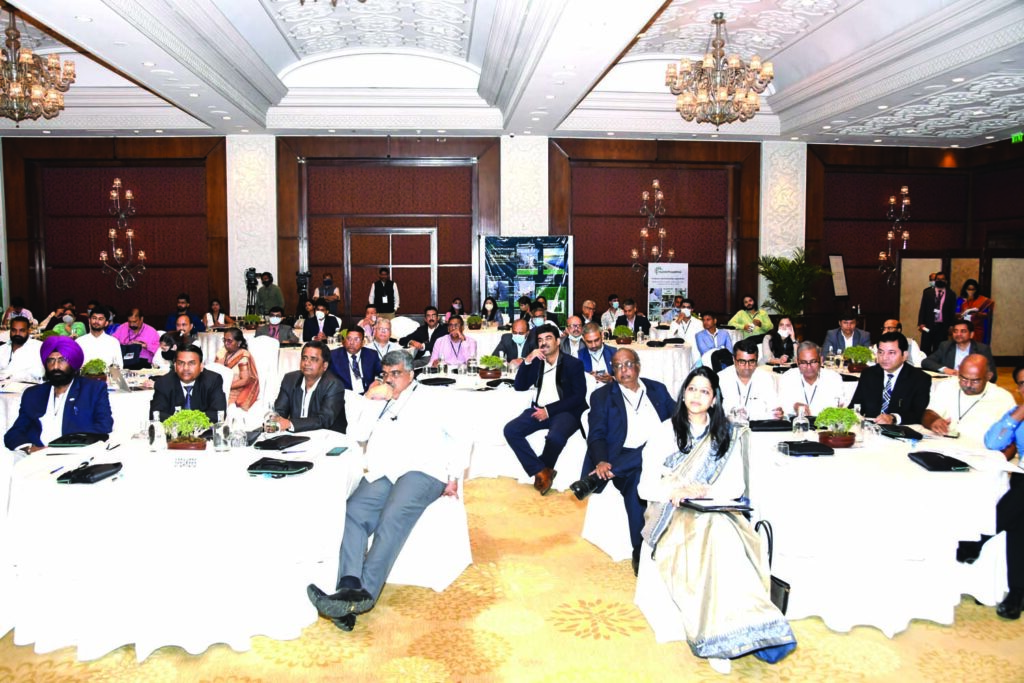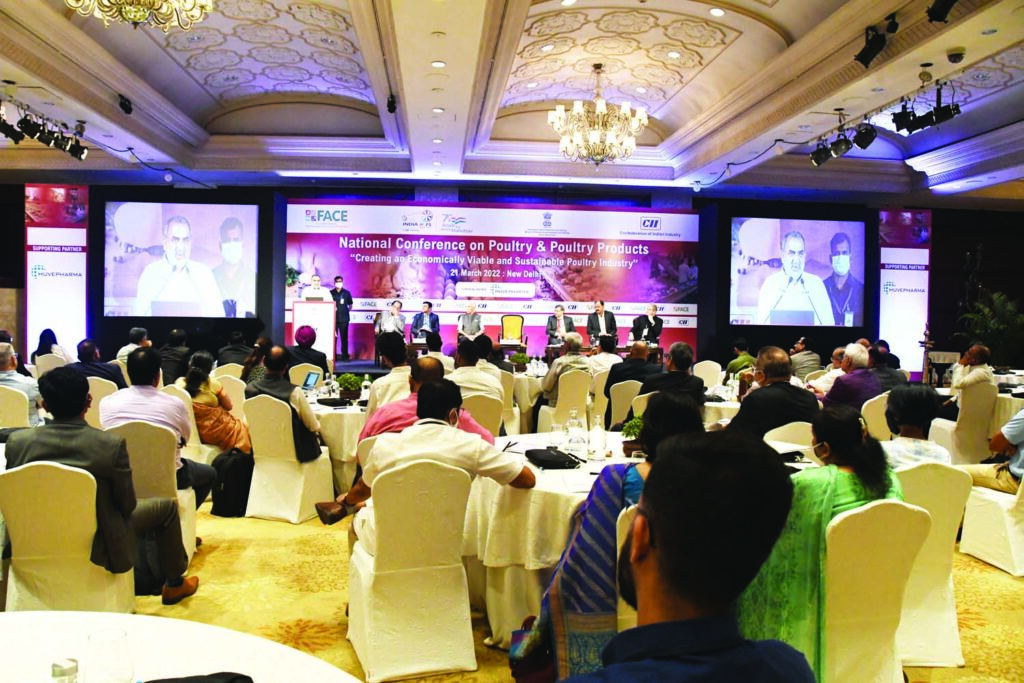Under the aegis of CII and supported by Huvepharma SEA, the ‘National conference on poultry & poultry products- creating an economically viable and sustainable poultry industry’ was held in New Delhi on 21st March 2022.
The conference could not have come at a better time for the embattled industry. It has been besieged with seemingly never-ending crises- COVID, bird flu, escalating feed ingredients and logistics cost, so on and so forth. The conference, the first in person, sit down one since COVID hit, served as a platform for the industry to come together, and collectively make representations to the government, policy makers to help alleviate problems faced by the industry.

In attendance were Dr. Sanjeev Kumar Balyan, Hon’ble Minister of State of Fisheries, Animal Husbandry and Dairying Government of India, Mr Atul Chaturvedi, Secretary Department of Animal Husbandry & Dairying, Ministry of Fisheries, Animal Husbandry & Dairying, Dr O P Chaudhary, Joint Secretary (NLM) Department of Animal Husbandry & Dairying, Government of India, industry titans and stakeholders of the industry.
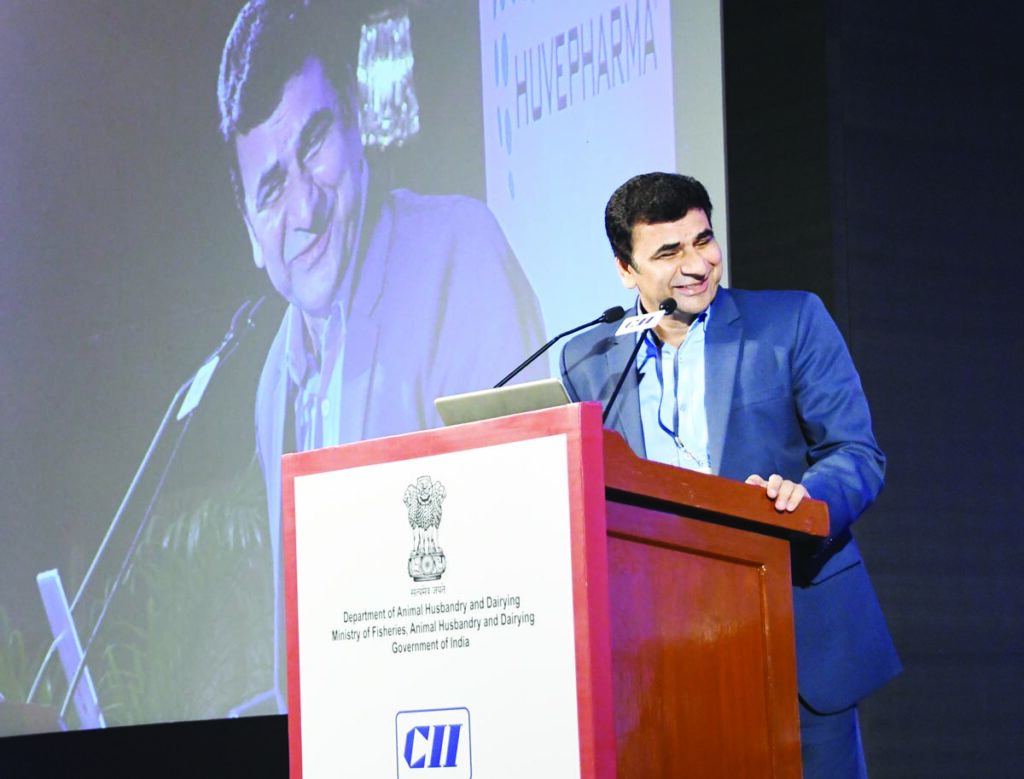
A major and recurring theme in the proceedings was the size of the world population, which is projected to get to 10bn by 2050. More importantly, India will become the MOST populous nation in the world. Feeding this population is going to be a challenge considering the limitations in resources. Food production will have to be doubled, but it will have to be grown in the same amount of land, with lesser amount of water and probably with more expensive inputs. There were more questions than answers- questions to which this conference has paved the way for finding answers.
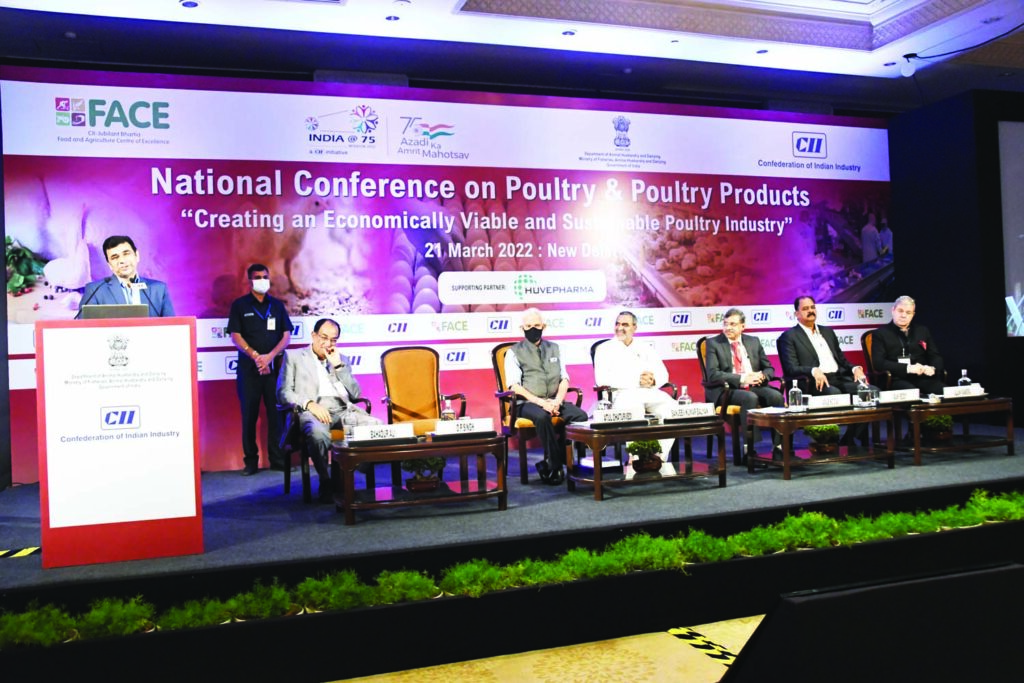
The industry was in agreement that the ‘consumer’ will emerge as a key consideration and newest stakeholder in the industry. Why? COVID has changed the manner in which consumers shop. Gone is the preference of making a visit to the wet market. It is replaced with clicking ‘buy’ on the phone, laptop, only after having checked all the label claims. Stores like Nandu’s are a manifestation of what the consumers want- hygiene, traceability of meat, processing, storage conditions- the full experience.
Today, chicken is the most common meat served in Indian homes. With improving purchasing power, more disposable income, better awareness associated with benefits of animal protein consumption- its going to hold this position undisputed. So, what do we need to do today to ensure that we satisfy the burgeoning demand of tomorrow?
The panelists emphasised and re-emphasised about the nature of conducting poultry production- it has to be sustainable. Available resources cannot be utilised indiscriminately, with disregard to the ecosystem. Poultry production should be regenerative. And for it to be such requires a large-scale collective effort centred on small-scale farmer success and system-level collective impact.
Dr. Sanjeev Kumar Balyan, Hon’ble Minister of State of Fisheries, Animal Husbandry and Dairying Government of India, in his address mentioned that only if there is a farmer, there will be poultry. Integration of small and marginal farmers with poultry production is an area that needs attention. There is definitely a case here for better hand holding and integration of marginal, small & medium farmers with poultry production houses.
The need to guarantee feed safety was highlighted by several speakers. We are ultimately, what we eat…so if what we eat is not fed safe food, it makes its way up the food chain, creating a considerable risk to human health. It would serve the industry well to embrace the ‘food safety culture’ – a top down heightened consciousness towards feed safety.
This redirected the focus to food processing. Currently, in India, about 5% of poultry meat is sold in processed form, of which only about 1% undergoes processing into value-added products (ready-to-eat/ready-to-cook). The poultry processing industry in India is expected to expand at a CAGR of ~12% between 2018 and 2023. For this statistic to become a reality, food processing needs to be pushed and encourage for better promotion of chicken protein. Presentations were made by stakeholders showcasing the various capabilities currently available and those under development for the India market.
There is growing pollution from poultry waste. Poultry operations generate a lot of waste throughout various stages of production. The waste needs to be treated , processed and disposed off or repurposed to limit littering and pollution. Poultry waste management solutions were presented and discussed.
Disease management in poultry was also discussed aggressively. Especially because avian influeza and other diseases continue to wreak havoc with the industry, eroding its value.
There has been a lot of evolution and innovation in enhancing poultry production efficiencies. One of the sessions deliberated on technology adaptations and innovations leading to increased quality of feeds in terms of nutrition, technology towards environmental control farms, hatchery technologies, automation in processing, innovations in packaging and integration of safety and hygiene that are the essential requirements to produce healthy and nutritious poultry products. The way forward is automation- to limit the degree of human involvement and thus, error, leading to better output.
The world is looking to India to claim its rightful place on the world stage as a leading producer of poultry and value added products. As a low hanging fruit, Indian chicken meat should be promoted to targeted countries where meat is imported on a large scale. The panel discussed the deterrents in import of Indian poultry output. Perception, lack of image building and networking , sluggish lobbying were identified as some of the culprits. The answer to which was that the industry should put up a united front. This was reiterated by Mr. Bahadur Ali, Founder and Managing Director IB Group. He said there is strength in numbers, better influencing and bargaining power too. Mr. Ali expressed his concern about the volatility in pricing of corn and soya, which is upending the cost of production.
Mr. Ram Reddy, Managing Director Sneha Farms requested for FTAs with targeted countries which will act as a stimulus for exportability of hatching eggs, table eggs, value added chicken meat and egg powder.
A key announcement that was made by Dr. Sanjeev Kumar Balyan Hon’ble Minister of State of Fisheries, Animal Husbandry and Dairying Government of India, was to reactivate the Poultry Advisory Committee. This committee would serve as the conduit between the ministry and industry and function as an effective tool to compile efforts being made by both sides for the betterment of the industry. Mr Atul Chaturvedi Secretary Department of Animal Husbandry & Dairying, Ministry of Fisheries, Animal Husbandry & Dairying and Dr O P Chaudhary Joint Secretary (NLM) Department of Animal Husbandry & Dairying, Government of India, both shared how various government schemes have fared and what new ones have been launched.
The conference presented an opportunity to look beyond problems- tap into opportunities that would shape the future of the poultry industry. As it turned out, there are limitless possibilities and untapped potential. One thing is for certain- the stage is set for explosive growth of the industry in the decades to come.
The principal sponsor of the conference was Huvepharma SEA. Huvepharma is a Bulgaria based multinational specialising in veterinary healthcare with an experience of over 50 years. They are the world’s first carbon neutral approach company, revolutionizing the way poultry industry does business. To know more about them please visit www.huvepharma.com.
